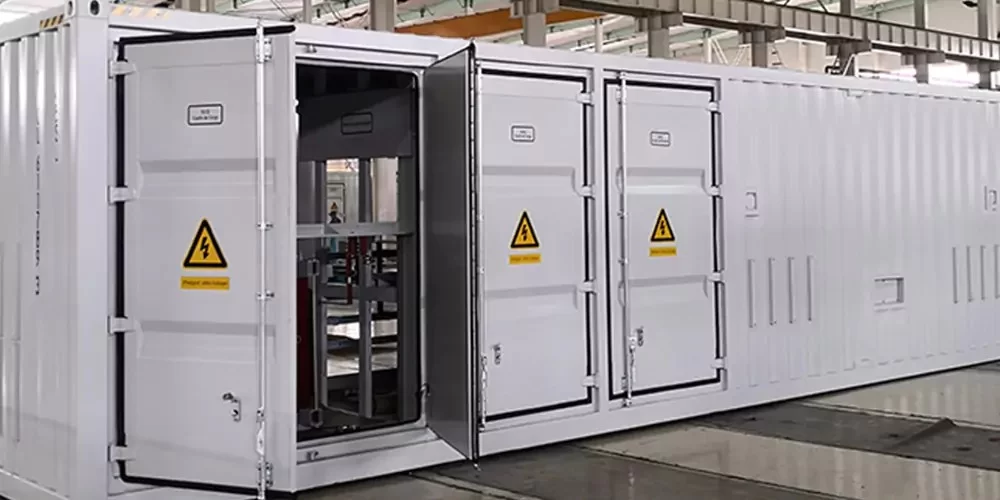Battery Energy Storage System Container Price: What Drives Cost in 2025?
A battery energy storage system container (or simply energy storage container) combines batteries, power conversion, thermal control, safety, and management into a modular “box” ready for deployment. If you’ve ever wondered how much such a container costs, you’re asking one of the most critical questions in planning a utility or industrial-scale storage project.
In 2025, average turnkey container prices range around USD 200 to USD 400 per kWh depending on capacity, components, and location of deployment. But this range hides much nuance—anything from battery chemistry to cooling systems to permits and integration.
Let’s deconstruct the cost drivers, analyze benchmark data, and guide you towards getting realistic quotes rather than exaggerated ballpark figures.
Benchmark: Battery Pack Cost Trends & Its Impact
It is useful to look at the underlying battery and pack prices before thinking about container prices, as they usually dictate the overall cost.
- In 2024, BloombergNEF reported that lithium-ion battery pack prices fell to USD 115/kWh, down 20 % year-over-year.
- The IEA also reports that faster scale-up of battery manufacturing is reducing the cost of energy storage technologies.
- For utility-scale containers (4-hour duration), the initial capital investment is currently between USD 200/kWh and USD 300/kWh, by location.
These are for battery + pack + basic electronics. Once you stick it in a container and add thermal systems, safety, inverters, etc., the “all-in” cost goes up.
Cost Components of a Containerized BESS
Here’s what makes up battery energy storage system container cost:
Component | % of Total Cost | Key Influences |
Battery & pack | 40–60 % | Chemistry (LFP vs NMC), cell cost, scale |
Power Conversion System (PCS) & Inverter | 10–20 % | Efficiency, throughput, grid specs |
Thermal Control & HVAC / Liquid Cooling | 5–15 % | Climates, ambient heat load |
Container, enclosure & safety systems | 5–10 % | Fire suppression, IP rating, structural design |
EMS / software & communications | 2–5 % | Remote monitoring, cybersecurity |
Site works, logistics & commissioning | 5–10 % | Transport, foundation, interconnection |
As batteries are the leading component, any technology improvement or supply excess there ripples through container pricing.
Cell-to-pack cost ratio is typically around 70% (i.e. cells are ~70% of pack cost), although a highly optimized pack can reach up to 80%.
Rough Price Ranges by Scale
In context, here are rough cost ranges for container energy storage systems (all-in):
Capacity | Estimated Price | Use Case |
200 kWh | USD 70,000 – 120,000 | Small commercial backup / microgrid |
1 MWh | USD 250,000 – 400,000 | Medium utility / large industrial |
5 MWh | USD 1.0M – 2.0M | Utility grid support, solar + storage projects |
Rough estimates. Local conditions—import duties, site access, permitting—can move cost up or down by 20–30%.
Why Prices Vary So Much
- Geography & Logistics
Remote or inaccessible sites add significantly to transport, crane, and civil works. Container weight even matters.
- Cooling Needs
Tropical climates necessitate intensive cooling (liquid-cooled or high-capacity HVAC), both CAPEX and OPEX.
- Certification & Safety
Compliance with standards like UL 9540A, IEC 62933, or national fire codes determines design and hardware cost.
- Integration Complexity
When the container must integrate with installed SCADA, grid-side protection, or microgrid controls, engineering cost increases.
- Battery Chemistry Selection
LFP (lithium iron phosphate) is becoming popular for stationary storage due to safety and long life, which steadies costs. Some newer chemistries (e.g. sodium-ion) are imminent but not yet widely used.
Questions to Ask Upon Receiving a Quote
- What is the USD/kWh turnkey cost, including site works?
- What battery chemistry is used (LFP / NMC / others)?
- What cooling technology is applied (air / liquid)?
- What warranty and expected cycle life is guaranteed (e.g. 10,000 cycles)?
- Is commissioning, controls integration, and local permitting included in the quote?
If a vendor quotes only “battery + container shell” without those extras, the “true delivered cost” will be considerably higher.
Future Trends: What to Expect in the Next 5 Years
- The IEA predicts that battery prices will drop up to 40 % by 2030 through innovation and economies of scale.
- Greater modularity, container product standardization will facilitate mass production, lowering margin buffers even more.
- Connection with grid services or “value stacking” (frequency regulation, arbitrage) will allow cost recovery faster.
- New chemistries for batteries can put lithium-based ones out of favor in specialized markets, but for now LFP dominates stationary storage.

